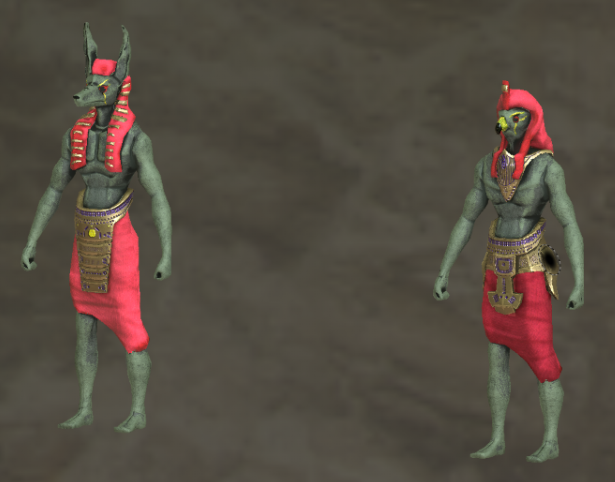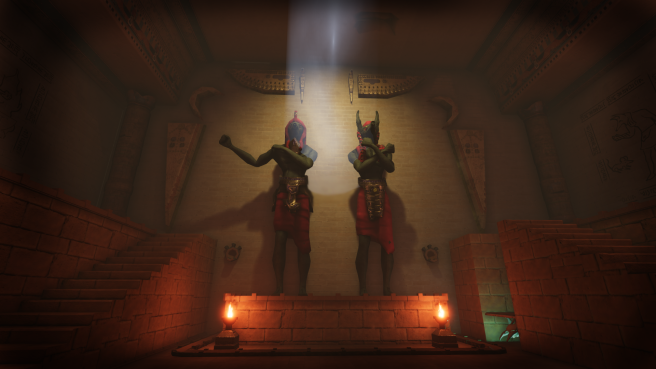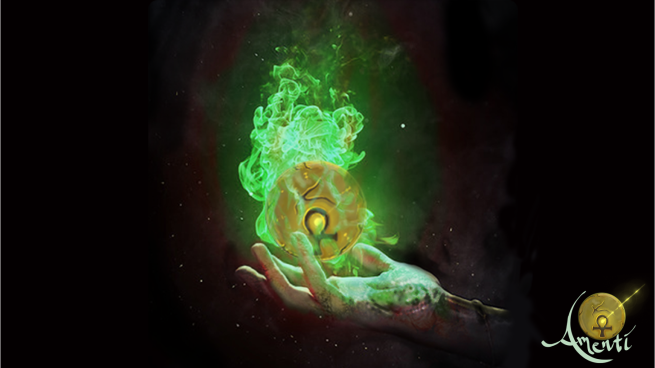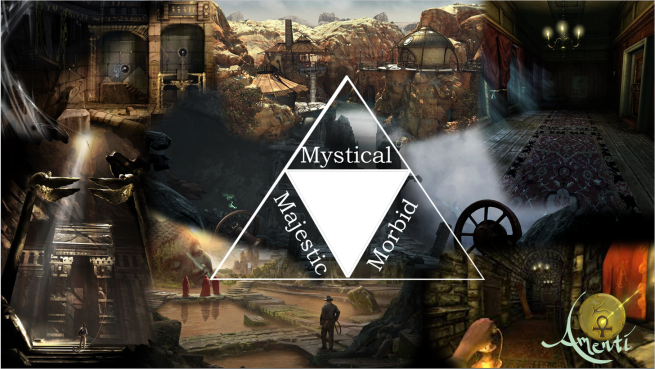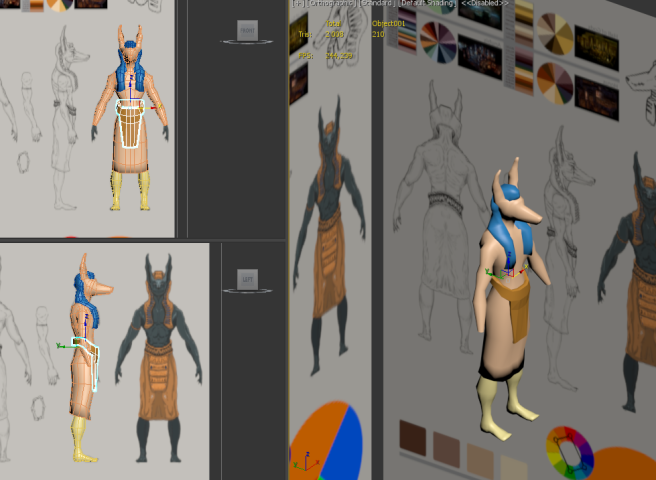Hi!
The first two weeks of Big Game Project (BGP) has flown by faster than I expected. For this course, me and my team of 7 are developing a game called Amenti.
Amenti is a first person dark, puzzle game where you will bend the elements of the gods to your benefit. Placed deep inside an Egyptian pyramid in the late 1800s. You play as Sofia Thompson, a young archeologist that’s trapped in the pyramid. She went down there to solve the mystery of her father’s disappearance. However, her curiosity caused her to pick up a cursed ring that turned her left hand into “the hand of death”. Now she must venture down through the pyramid to reach the death realm and find the Ankh, the only thing that can cure her.
My role in this production is first and foremost being the Producer, and second a graphical artist. In my role as Producer it is my responsibility to supervise all the administrative work, hold presentations and meetings, as well as solving conflicts within the group. I have been the Producer in every group since I started this education and I am fairly certain that I want to work with project management once I have finished my education.
So, for the first week of BGP we focused solely on pre-production work. For me this meant writing a pitch with a PowerPoint to present in front of the class and staff. After the pitch, I started to work on our Scrum document and our project plan. I also supervised the writing of our design document.
The pitch was the easiest part of these two weeks. Before this course, we were given the opportunity to participate in Road to GGC, where we got feedback on our game idea on three separate occasions during the course of four months. I had already written three different presentations for these occasions so I used them as a template.
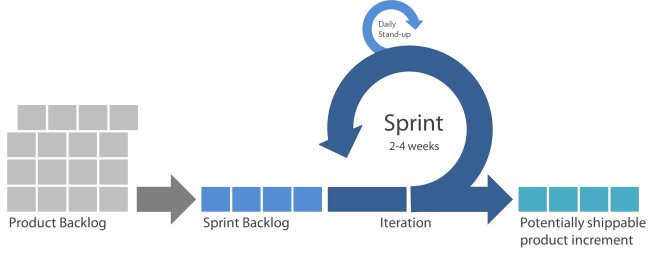
The really tricky part has been putting together the Scrum document and the project plan. For those of you who are not familiar with Scrum, it is an agile workflow consisting of several steps. See picture above. You start of by writing a product backlog, in which you write down all the different assets in the game and what they need. Once the backlog is finished you start your sprints. I have scheduled my group so that every Monday we have a sprint plan where we decide what needs to be done that week by each person and plan how much time they will need for each task. We also discuss how large of a risk that task will have. This is mostly based on the person’s knowledge of the task. We also decide who will be in charge of the quality assurance for each task. Tuesday-Friday we have daily standups where we talk about what we are going to do that day and what we might need help with. Finally, we have our Sprint Review where we follow up on that week’s tasks. We write down how long it took to do each task, if we did any additional tasks, the actual risk, if it is implemented in the engine, if it meets expectations and if it’s completely done.
The reason I struggled with the Scrum document was the backlog. It takes a lot of time to write down all the assets, and seeing as I have no experience with programming I cannot write down the code parts. On top of that, one cannot write down assets before they are properly planned. The entire team was eager to go in to production as soon as possible and skip all the boring parts of pre-production. So, I had to convince them to prioritize this and the design document, which was easier said than done and unfortunately delayed the pre-production. Now however, after a slow start, we are up and running in production.
Once all of the documentation was done I to spent my Friday morning working on some placeholders.
They are all very low-poly and in their first state. For now we use them to measure size in the world and as tools to white-box out all levels to test the puzzles.
That is all for today, stay tuned!
